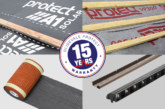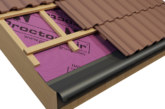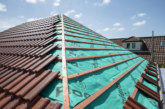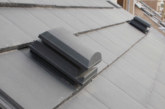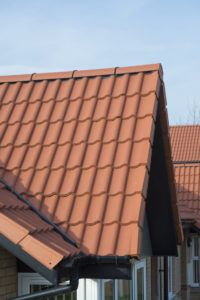 Roofing defects can prove costly for local authorities and housing associations. Here, Tom Woodhouse, Site Services Manager from Marley, looks at some common roofing failures and how to avoid them.
Roofing defects can prove costly for local authorities and housing associations. Here, Tom Woodhouse, Site Services Manager from Marley, looks at some common roofing failures and how to avoid them.
The roofing industry has experienced a huge shift over the past five years, with the introduction of more stringent fixings requirements and a ban on mortar bedding, without additional mechanical fixings. Roofing contractors, manufacturers and industry bodies have worked together to implement BS 5534:2014 and improve the quality and security of pitched roofing in the UK.
Paul Cribbens, NHBC standards & technical manager, told us: “Working with the roofing industry, including tile manufacturers, to understand the cause and find solutions to recurring issues with pitched roof coverings has been a key part of our ongoing campaign to improve the quality of this part of the construction. Through this cooperative approach, we are confident that pitched roofs are now installed with better materials and detailing than they have been in the past, which is great news for all involved.”
However, this doesn’t mean that pitched roofing problems have been eradicated and local authorities and housing associations will inevitably still have cases where they are called to look at new or refurbished roofs because of leaks, condensation or damaged tiles. This takes time to go out and ascertain the problem, identify the fault and call contractors back to site to repair faults.
When our site services team are consulted following roof issues, some avoidable problems reported include condensation caused by lack of ventilation, compatibility issues due to substitution of inferior or incompatible dry fix systems, issues caused by a change in specification from the design stage to roof works, or insufficient fixings for the level of exposure. Other common reasons for roof failure can be using a tile outside of technical performance criteria, such as below its minimum pitch, or not installing in accordance with manufacturer instructions.
Indeed, Nicola Toomey, project architect at Manchester-based Drome, told us: “We are occasionally commissioned to inspect defective works and when turning up to a site to look at a roof, it is typically failure of mortar or the use of incompatible products that causes issues. Major roofing failures are often caused by the incorrect application of a product.”
So what steps can local authorities and housing association take to avoid these problems, minimise the risk of call-backs and reduce the hassle of any warranty claims?
1 – Get a new fixing specification for every project
All pitched roofs should be fixed to the BS 5534:2014 standard, which means that as well as minimum fixing recommendations, additional nails and clips may be required depending on pitch and degree of exposure.
Therefore, you or your contractor should obtain a free fixing specification from the tile manufacturer for each new project you do. This may sound like a hassle but it could invalidate any warranty if you don’t and means you could be liable for the cost of repairs.
You can quickly obtain free fixings specifications via the tool on the Marley website, or by calling our technical team on 01283 722588.
2 – NBS Specifications
Getting the specification right eliminates any issues further down the line, such as inadequate ventilation or issues with using incompatible systems. Indeed, many roofing problems can be avoided by specifying a quality product from the outset.
You can obtain a free NBS specification for the roof from the Marley website. This will ensure that correct compatible materials are used on the project and that it complies with British Standards. You will need to obtain an NBS Specification from us if you are applying for our full system warranty.
3 – Ventilate to prevent condensation
Our Site Services team and Technical Advisory Service often receive enquiries where tenants or owners of new houses discover moisture within the loft space. When we investigate the cause, it is usually condensation forming due to insufficient ventilation when the roof has been installed.
To avoid this type of call back, always comply with BS 5250:2011+A1:2016 ‘Code of practice for control of condensation in buildings’ and BS 9250:2007 ‘Code of practice for design of the air tightness of ceilings in pitched roofs’. Also, don’t use a breathable underlay as the sole means of ventilation.
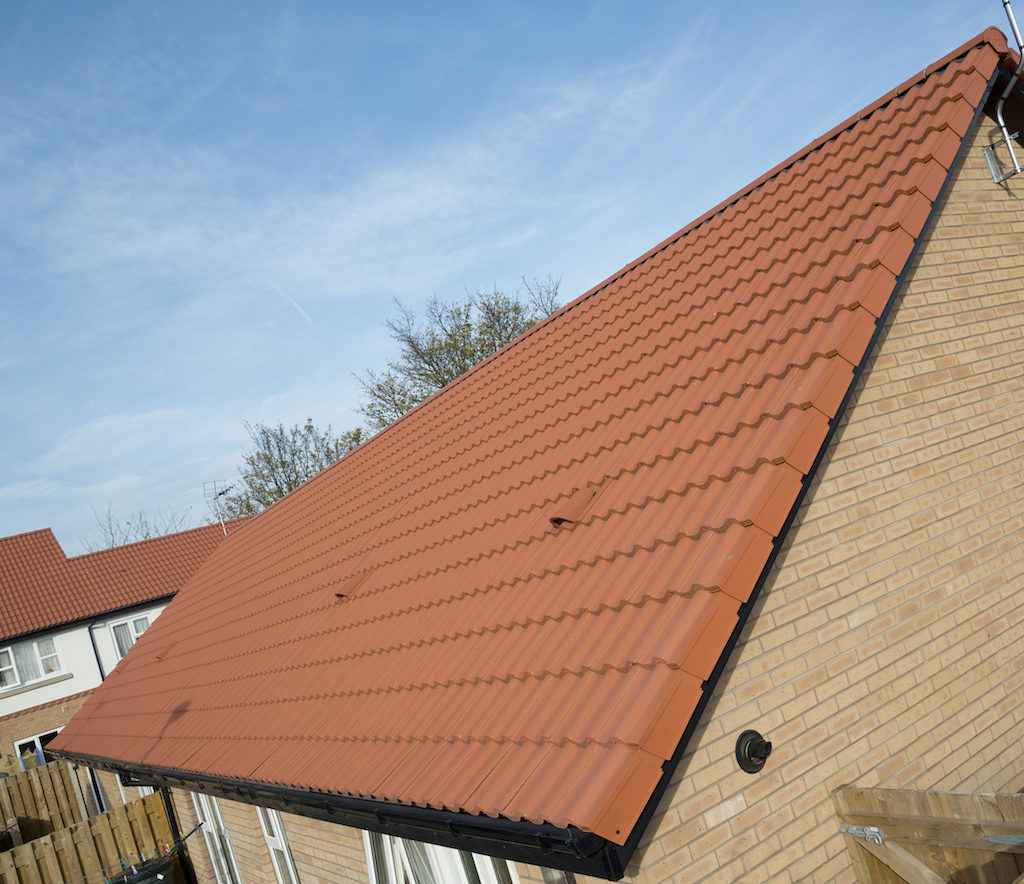
4 – Specify quality dry fix systems
Leaking roofs, or gable wall staining, can be caused by inferior dry fix systems. Always specify a dry fix system that is compliant with BS 8612 or has BBA certification. Also consider that not all compliant systems will offer the same levels of performance and there will still be significant differences between products.
5 – Consider specifying a roof system from one manufacturer
Specifying a single-source pitched roof system can help to reduce the risk of call-backs, providing reassurance of compatibility, compliance with British Standards and long-term performance. In addition, Marley’s roof system comes with the benefit of a 15 year guarantee, giving you peace of mind that should anything go wrong, or be challenged on-site, then there is only one supplier to deal with.
Drome Architects specifies our full roof system and Nicola Toomey told us: “Clients are becoming increasingly aware of the comprehensive and robust product warranties and serviceable lifespan that some full roof systems can offer. Using a full roof system in conjunction with a fixing schedule and approved details gives the client a singular point of responsibility in case of defects. We are finding that designers and contractors are increasingly diligent in following the suppliers’ approved construction drawings and fixing specifications for each specific project as it minimises their risk profile in the event of defects.”
6 – When installing roofing products, always follow the manufacturer instructions
Products from different manufacturers may look similar but there may be differences in the installation process, so it’s important that your contractors follow manufacturer instructions. Our free sitework guide and app gives easy to follow instructions for installing all of our products.


